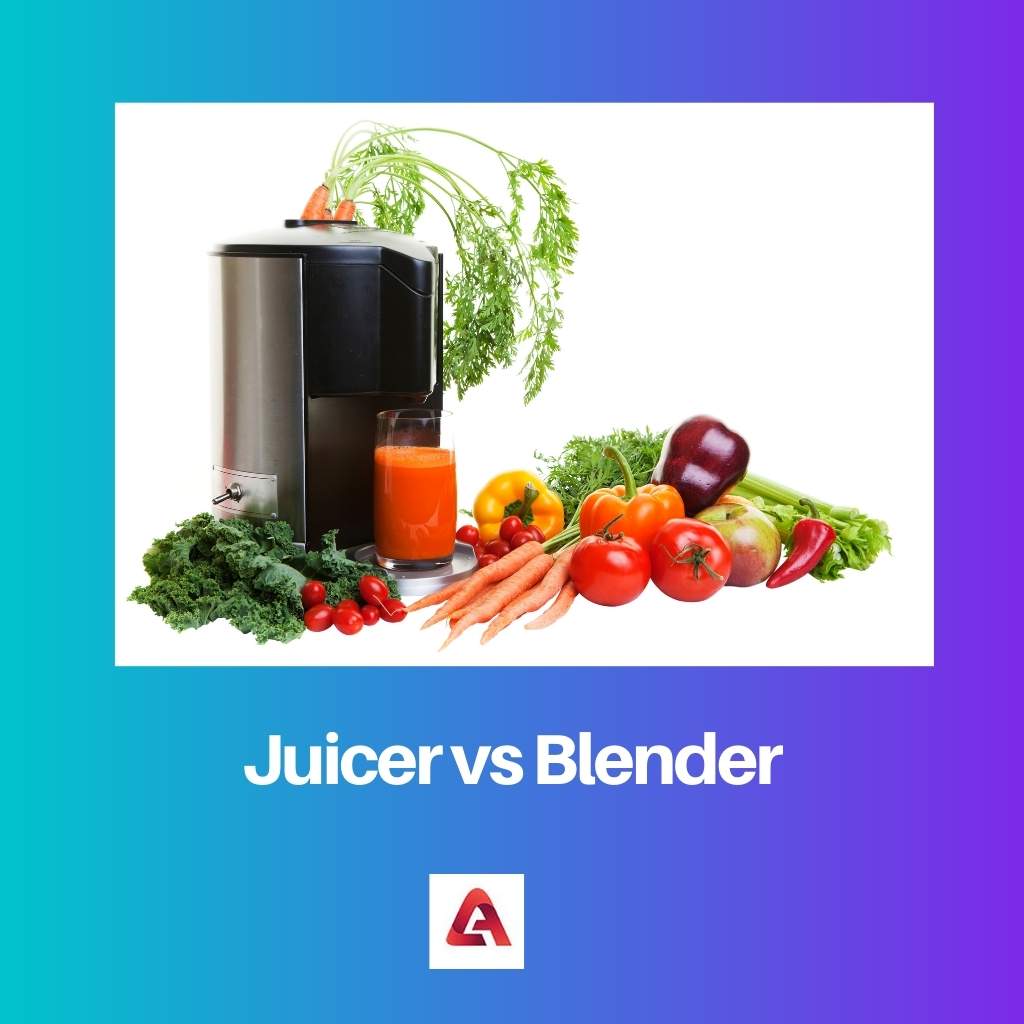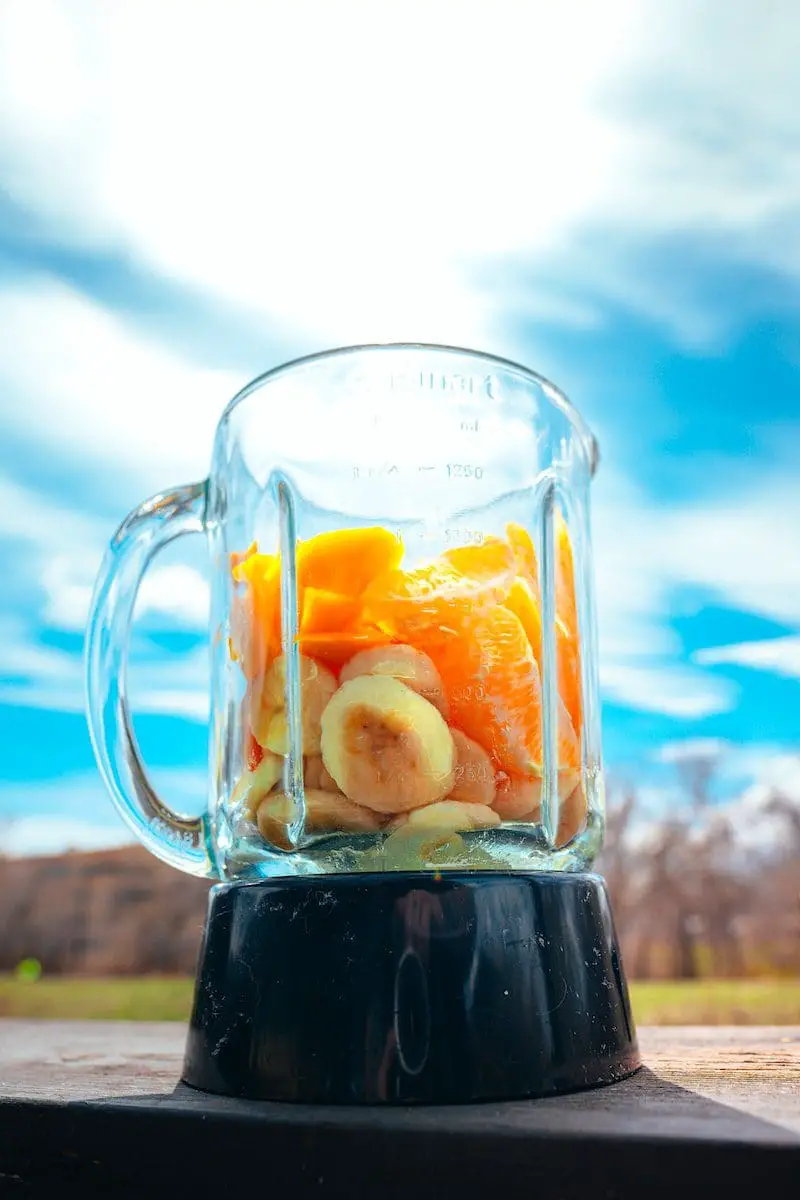The name of these two products has been interchangeably used.
They are commonly used for the processing of vegetables and fruits into thinner particles so that they can retain the minerals, vitamins and, in some cases, fibres.
There is a difference between the two, which is quite known when the texture of the crushed particle is seen.
Key Takeaways
- A juicer is a kitchen appliance that extracts juice from fruits and vegetables, while a blender is a kitchen appliance that blends and purees ingredients.
- A juicer separates the juice from the pulp, while a blender mixes everything.
- A juicer is more efficient in extracting juice, while a blender can be used for various purposes, like making smoothies, soups, and sauces.
Juicer vs Blender
A juicer is a processor used to extract liquids from fruits and vegetables by separating the pulp or fibrous content from the fruit. This device leaves behind a thin liquid while the pulp is disposed of. Making juice from this processor allows instant absorption of vitamins and minerals into the bloodstream. A blender is a processor that mixes all of the ingredients together to create a thick liquid. It also mixed in the fibrous content, which supports digestive health and sustains hunger and energy for a long time.

The juicer was invented by Norman Walker in the 1930s and is termed so because it extracts the liquid out of the vegetables and fruits through a process named juicing which was derived from jus, juis, jouis, which referred to the liquid that was acquired after boiling herbs.
Juicing is also considered good for health and can increase nutrient absorption.
A laboratory and kitchen device is used for a variety of purposes and can be available in many different styles like glass, plastic and metal.
It can be used for processes such as the emulsification of milk to produce butter, crushing, and making puree.
The old versions consisted of a blade at the bottom of the jar, but the newly modified ones are far more powerful.
Comparison Table
| Parameters of Comparison | Juicer | Blender |
|---|---|---|
| Texture of liquid | The texture of liquid which is obtained by the process is fine liquid and does not contain any fibre | The texture of the liquid is comparatively thicker as it blends the fibres of vegetables and fruits also. |
| Body of the product | The body consists of a pipe-like structure through which the item is inserted and a blade is attached to the bottom. | The body can be of various materials in which there is a blade at the bottom and the jar is attached to a bigger body consisting of a blade-like object. |
| Working | The juicer works on the simple principle of centrifugal force. It means it throws the juice with force leaving the fibres. | The blender works on the fact that when powerful blades rotate they crush the food items and mix them together as well as using the process of emulsification. |
| Advantages | The juicer leaves out the fibres and therefore it becomes easier to digest and process as well as gives a pack of nutrients needed. | The blender includes fibres that slow down the process of digestion and we feel full for longer periods as energy is released eventually. |
| Disadvantages | The process of juicing leaves waste and gives energy instantaneously resulting in fluctuation of the sugar level. | The blending is not a good source of instant energy at the time of need and lowers the number of nutrients at a single time. |
What is Juicer?
A juicer works on the process of juicing and the principle of centrifugal force. The term juicing has been derived from the French words jus, juis, jouis, which means the extraction of juice from boiling herbs.
It was invented by Norman Walker in the 1930s and has increased the nutrient intake of the body.
The juicer is available in a variety of materials and bodies, but the most common one consists of a pipe through which the item is taken and, along with that, a pipe to take the juice and the storage of fibre varies from juicer type, some throw it out whereas others have a provision for them.
The juicer crushes the vegetables and fruits into fine particles, leaving only the liquid part and throwing away the fibrous part.
Due to the lack of fibrous parts, it is easier to digest and can be really helpful at the time when an instant sugar is required. It is also preferred because of its quality of packing more nutrients in a glass full.
As the coin has two sides, the juicer also increases the amount of wastage done in a shorter period and increases the amount of sugar in the body at a very fast rate, which can be harmful.
People believe that intake of juices without sugar reduces it to a certain level, but it is said that instant energy can also be harmful.

What is Blender?
A kitchen application is used for the emulsification of products such as milk to get butter, for making puree and other such products.
It is in the form of a jar that has a blade beneath it, and it cuts the vegetables and fruits into finer pieces while completely meshing them together. Powerful blenders can also cut ice and other such hard solids.
The blender has the unique property to retain the fibres due to which the liquid is a bit thicker than that of juice and is also mostly used to make smoothies.
To remove the excess fibres, which are bigger in size, the liquid can be strained through a sieve. It can be either glass, plastic, or metal.
The presence of fibres makes the liquid beneficial for the body. It not only helps in slow digestion but also helps in the clearing of the digestive tract from toxins and other harmful products.
The liquid obtained from blending is slowly digested and helps retain energy for a longer period while balancing the sugar levels.
Due to the presence of fibres, some people find it unappetizing and prefer not to have it.
It slows the process of digestion and can be a problem for old-aged people as it may not be well suited for situations where an instant sugar requirement is there. The number of fruits which go in also less.

Main Differences Between Juicer and Blender
- The juicer helps in obtaining only the liquid part of vegetables and fruits, and the texture is a fine liquid, whereas the blender makes a liquid that consists of both liquid and fibre and is, therefore, a thicker liquid.
- The juicer has a piper for input and output and consists of a blade rotating at high speed at the bottom, whereas a blender has a jar that has a fitted blade and a base that has a plastic rotator for fitting the jar, as well as the jar, has three types metal, plastic and glass.
- The juicer has a working which comprises the use of centrifugal force where the juice is thrown at high speed, and the fibre is thrown out. The blender works on the principle that the blade can crush items very fast and mix them and also uses emulsification for the removal of butter from milk.
- The advantages of using a juicer are that they can pack all the nutrients in a small glass, enable more intake of fruits, and can be easily digestible, whereas the blender slows down the process of digestion and can give more fibre to the body, which helps in removing the toxins.
- The disadvantage of juicers is that they can give instant rise or lower of sugar, which can be harmful to the body and can cause people to have diabetes, whereas the blender liquid taste does not suit everyone, and at the time when instant sugar is needed it is not possible to do so.








